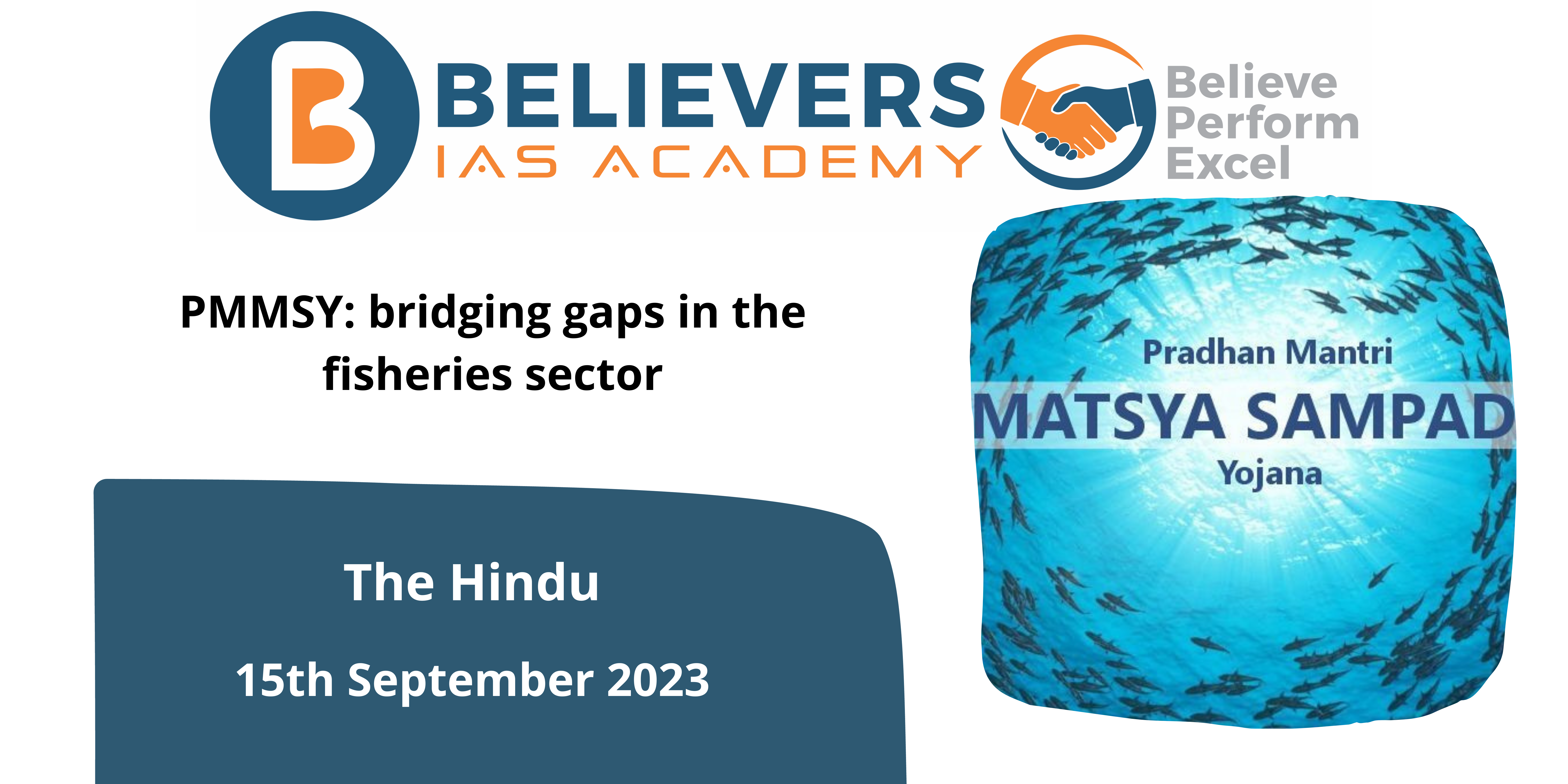PMMSY: bridging gaps in the fisheries sector
Context
The COVID-19 pandemic threatened to halt the advancement in the Indian fisheries sector in 2020 as a result of reforms started by Prime Minister Narendra Modi, who recognised the enormous potential of the Blue Economy and began systemic development of the sector, including the creation of a Fisheries Ministry. The PM, however, took advantage of the situation by introducing the Atmanirbhar Bharat package for the fishing industry. The Pradhan Mantri Matsya Sampada Yojana (PMMSY) received a huge sum of 20,050 crore in 2020, making it the largest investment in Indian fisheries history.
What is the Pradhan Mantri Matsya Sampada Yojana?
- The Government of India launched the Pradhan Mantri Matsya Sampada Yojana to provide a comprehensive framework and close infrastructure deficiencies in the fisheries sector.
- On July 5, 2019, when presenting the Union budget for 2019–20 to the Indian parliament, Finance Minister Nirmala Sitharaman announced the program. With the implementation of Neeli Kranti (also known as the “Blue Revolution”), the government hopes to make India the world leader in the production and processing of fish.
- The government’s goal is to increase farmers’ incomes by 2022–2023. This program supports that goal.
What is Blue Revolution?
- Between 1985 and 1990, the Neel or Nili Kranti Mission, often known as the Blue Revolution, was launched in India. The Blue Revolution set out to build, manage, and promote fisheries to double farmers’ revenue. Through the use of innovative methods for fish breeding, rearing, marketing, and exporting, the Blue Revolution aimed to improve aquaculture. Additionally, the Blue Revolution promoted fishing among social groups who were disadvantaged economically, including women, scheduled castes, and scheduled tribes.
- Dr. Hiralal Chaudhuri is an Indian Bengali fisheries scientist who created the Blue Revolution. The concept of induced carp breeding was created by Chaudhuri. Fishing is a long-established occupation in China, where the Blue Revolution originally began.
How did COVID-19 impact the Blue Revolution?
- Supply Chain Disruption: The epidemic caused supply chains for fisheries and aquaculture goods to be affected. Lockdowns and other limitations on movement made it difficult to transport and distribute seafood items, which disrupted the market and cost fishermen and aquaculturists money.
- Export Challenges: Fisheries and aquaculture sectors that are focused on exporting have suffered difficulties as a result of decreased demand in global markets. Reduced export potential was caused by the closure of large seafood users such as restaurants, hotels, and catering services.
- Labor Shortages: Because the fishing industry depends so heavily on physical labour, lockdowns and safety worries have contributed to labour scarcity. Fish harvesting, processing, and other processes were impacted, which decreased productivity.
- Price Changes: The pandemic caused price changes in the seafood industry. Prices first decreased as a result of an abundance and a decline in demand. Later, as supply chain disruptions persisted, prices increased, having distinct effects on consumers and producers.
- Post-Harvest Losses: The fisheries industry saw an increase in post-harvest losses as a result of broken supply chains. The inability to transport or store perishable fish products made the situation worse.
- Economic Impact on Fishermen: Due to their inability to sell their catch, many small-scale and subsistence fishermen experienced financial difficulties. The way of life in these areas was impacted by the loss of revenue.
How are these schemes helping the women folk?
- Promoting Women Entrepreneurs: These programs enable women to start their businesses in the fisheries and aquaculture industries. They allow women to own and fish processing plants, aquaculture farms, and other similar companies.
- Diversifying Livelihoods: Women frequently participate in a variety of livelihood activities, and these programs provide women with a range of opportunities in the fishing industry. They can engage in pursuits like seaweed farming, pearl culture, and ornamental fisheries to diversify their sources of income.
Conclusion
Overall, the PMMSY project has greatly contributed to the modernization and growth of the Indian fisheries industry, the encouragement of entrepreneurship, and the improvement of India’s position in the world of fish and aquaculture output.




